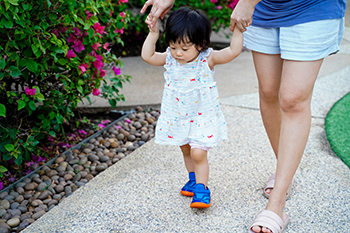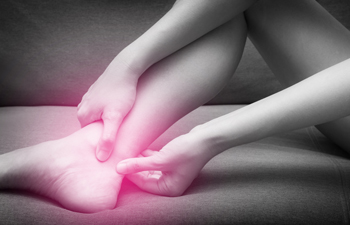Items filtered by date: February 2024
Getting Started Running Without Injury

Starting your journey as a runner can be a fulfilling endeavor for both physical fitness and mental well-being, but it's important to approach it with caution to avoid injury. Begin by setting realistic goals and pace yourself according to your fitness level. Invest in quality running shoes that provide proper support, cushioning, and fit. To build endurance gradually, try the run-walk-run method, alternating between running and walking intervals. Always warm up before and cool down after each run, with dynamic and static stretches respectively, to prepare your muscles and aid recovery. Increase your mileage gradually to avoid overexertion, aiming for consistency in your running routine with three to four runs per week. Incorporate various types of runs, such as interval training and hill repeats. Listen to your body and take rest days as needed, paying attention to any signs of discomfort or persistent pain. If you sustain an injury from running, it is suggested that you make an appointment with a podiatrist for an exam and treatment.
Exercising your feet regularly with the proper foot wear is a great way to prevent injuries. If you have any concerns about your feet, contact Brandon M. Zuklie, DPM of New Jersey. Our doctor will treat your foot and ankle needs.
How to Prevent Running Injuries
Many common running injuries are caused by overuse and overtraining. When the back of the kneecap starts wearing out and starts causing pain in your knee, this is commonly referred to as runner’s knee. Runner’s knee is a decrease in strength in your quadriceps and can occur if you’re not wearing properly fitted or supporting shoes. To prevent runner’s knee, focusing on hip strengthening is a good idea, as well as strengthening your quads to keep the kneecaps aligned.
What Are Some Causes of Running Injuries?
- One cause of a common running injury is called iliotibial band syndrome.
- Plantar fasciitis is also another common injury.
- Stress fractures can occur from overtraining, lack of calcium, or even your running style.
Best Ways to Prevent Running Injuries
- Wear footwear that fits properly and suits your running needs.
- Running shoes are the only protective gear that runners have to safeguard them from injury.
- Make a training schedule. Adding strengthening exercises as well as regular stretching can help keep you strong and limber and can lessen the possibility of injuries.
- Stretching keeps muscles limber; this will help you gain better flexibility.
If you have any questions please feel free to contact our offices located in Piscataway, Jamesburg, and Branchburg, NJ . We offer the newest diagnostic and treatment technologies for all your foot and ankle needs.
Measuring Baby Shoe Sizes

Measuring your baby's feet for the right shoe size is essential for their comfort and healthy foot development. Begin by grabbing a piece of paper and a pencil to trace your baby's foot. Place the paper on a flat surface and gently press your baby's foot onto it, ensuring it lies flat without curling toes. Carefully trace the outline of their foot with the pencil. Once the outline is complete, use a ruler to measure the length from the heel to the longest toe. Repeat the process for both feet, as slight differences in size are common. With the measurements in hand, refer to the sizing chart provided by the shoe manufacturer or retailer to determine the appropriate shoe size for your baby. Remember that baby shoe sizes can vary between brands, so it is a good idea to consult the specific sizing guidelines for accurate fitting. By following these simple steps, you can ensure that your baby's feet are comfortably supported as they explore the world around them. If you are seeking more detailed guidelines about how to measure your baby’s feet or if their shoes are causing them problems, it is suggested that you confer with a podiatrist.
Making sure that your children maintain good foot health is very important as they grow. If you have any questions, contact Brandon M. Zuklie, DPM of New Jersey. Our doctor can provide the care you need to keep you pain-free and on your feet.
Keeping Children's Feet Healthy
Having healthy feet during childhood can help prevent medical problems later in life, namely in the back and legs. As children grow, their feet require different types of care. Here are some things to consider...
Although babies do not walk yet, it is still very important to take care of their feet.
Avoid putting tight shoes or socks on his or her feet.
Allow the baby to stretch and kick his or her feet to feel comfortable.
As a toddler, kids are now on the move and begin to develop differently. At this age, toddlers are getting a feel for walking, so don’t be alarmed if your toddler is unsteady or ‘walks funny’.
As your child gets older, it is important to teach them how to take care of their feet.
Show them proper hygiene to prevent infections such as fungus.
Be watchful for any pain or injury.
Have all injuries checked by a doctor as soon as possible.
Comfortable, protective shoes should always be worn, especially at play.
If you have any questions please feel free to contact our offices located in Piscataway, Jamesburg, and Branchburg, NJ . We offer the newest diagnostic and treatment technologies for all your foot and ankle needs.
Tendonitis and Foot and Ankle Pain

Tendonitis of the foot and ankle can cause discomfort and pain, often due to overuse or injury. The tendons that connect muscles to bones become inflamed, leading to symptoms like swelling and aching. There are various types of tendonitis affecting different parts of the foot and ankle, including Achilles tendonitis, posterior tibial tendonitis, peroneal tendonitis, flexor tendonitis, and extensor tendonitis. Achilles tendonitis typically results from increased activity levels, new sports, or wearing ill-fitting footwear. It generally responds well to conservative treatments. Posterior tibial tendonitis is associated with flat feet and may require braces or orthotics. Peroneal tendonitis affects the outer ankle and can be linked to high-arched feet and previous ankle sprains. Flexor tendonitis is common among dancers and those who balance on their toes, while extensor tendonitis is often caused by friction with tight shoes or certain medical conditions. Common causes include overuse, abnormal foot structure, trauma, or underlying medical conditions such as arthritis. Diagnosis involves medical history, X-rays, or MRI scans to determine the extent of the injury. If you have tendon pain in the foot or ankle, it is suggested that you schedule an appointment with a podiatrist for a proper diagnosis and treatment, and to learn about prevention measures.
Ankle pain can be caused by a number of problems and may be potentially serious. If you have ankle pain, consult with Brandon M. Zuklie, DPM from New Jersey. Our doctor will assess your condition and provide you with quality foot and ankle treatment.
Ankle pain is any condition that causes pain in the ankle. Due to the fact that the ankle consists of tendons, muscles, bones, and ligaments, ankle pain can come from a number of different conditions.
Causes
The most common causes of ankle pain include:
- Types of arthritis (rheumatoid, osteoarthritis, and gout)
- Ankle sprains
- Broken ankles
- Achilles tendonitis
- Achilles tendon rupture
- Stress fractures
- Bursitis
- Tarsal tunnel syndrome
- Plantar fasciitis
Symptoms
Symptoms of ankle injury vary based upon the condition. Pain may include general pain and discomfort, swelling, aching, redness, bruising, burning or stabbing sensations, and/or loss of sensation.
Diagnosis
Due to the wide variety of potential causes of ankle pain, podiatrists will utilize a number of different methods to properly diagnose ankle pain. This can include asking for personal and family medical histories and of any recent injuries. Further diagnosis may include sensation tests, a physical examination, and potentially x-rays or other imaging tests.
Treatment
Just as the range of causes varies widely, so do treatments. Some more common treatments are rest, ice packs, keeping pressure off the foot, orthotics and braces, medication for inflammation and pain, and surgery.
If you have any questions, please feel free to contact our offices located in Piscataway, Jamesburg, and Branchburg, NJ . We offer the newest diagnostic and treatment technologies for all your foot care needs.
Definition and Symptoms of Ankle Sprains

Ankle sprains, prevalent injuries that affect ligaments surrounding the ankle joint, can disrupt daily life and mobility. Occurring when the ankle is forced beyond its normal range of motion, these sprains lead to the stretching or tearing of ligaments, resulting in pain and swelling. The severity of an ankle sprain can vary, classified into three grades based on the extent of ligament damage. Common symptoms include localized pain, swelling, and difficulty bearing weight on the affected ankle. In more severe cases, individuals may experience bruising and instability. Recognizing the signs of an ankle sprain is vital for appropriate management, as untreated sprains can lead to chronic instability and long-term complications. An accurate understanding of the definition and symptoms of ankle sprains empowers individuals to seek timely intervention, facilitating a smoother recovery and a return to normal activities. If you have endured an ankle sprain, it is strongly suggested that you consult a podiatrist who can determine what the grade of the sprain is, and offer appropriate treatment methods.
Ankle sprains are common but need immediate attention. If you need your feet checked, contact Brandon M. Zuklie, DPM from New Jersey. Our doctor can provide the care you need to keep you pain-free and on your feet.
How Does an Ankle Sprain Occur?
Ankle sprains take place when the ligaments in your ankle are torn or stretched beyond their limits. There are multiple ways that the ankle can become injured, including twisting or rolling over onto your ankle, putting undue stress on it, or causing trauma to the ankle itself.
What Are the Symptoms?
- Mild to moderate bruising
- Limited mobility
- Swelling
- Discoloration of the skin (depending on severity)
Preventing a Sprain
- Wearing appropriate shoes for the occasion
- Stretching before exercises and sports
- Knowing your limits
Treatment of a Sprain
Treatment of a sprain depends on the severity. Many times, people are told to rest and remain off their feet completely, while others are given an air cast. If the sprain is very severe, surgery may be required.
If you have suffered an ankle sprain previously, you may want to consider additional support such as a brace and regular exercises to strengthen the ankle.
If you have any questions please feel free to contact our offices located in Piscataway, Jamesburg, and Branchburg, NJ . We offer the newest diagnostic and treatment technologies for all your foot and ankle needs.
